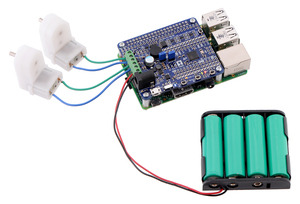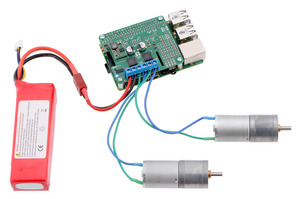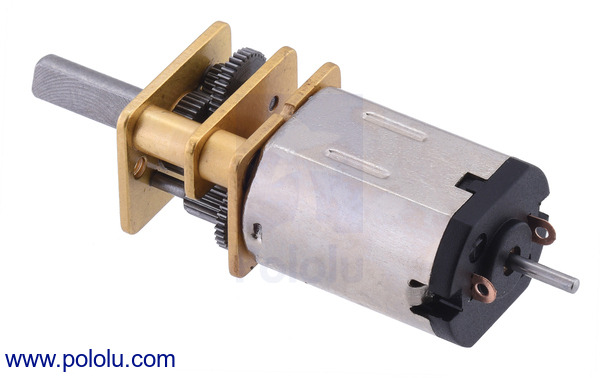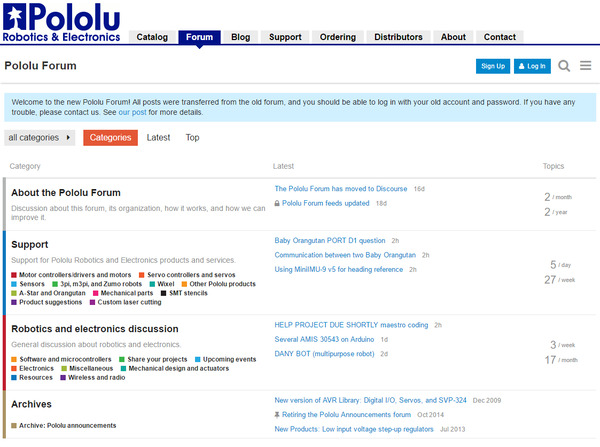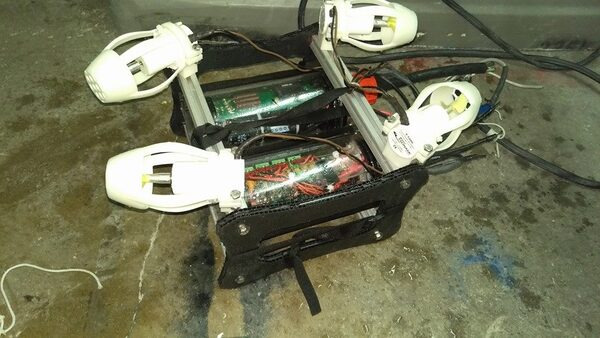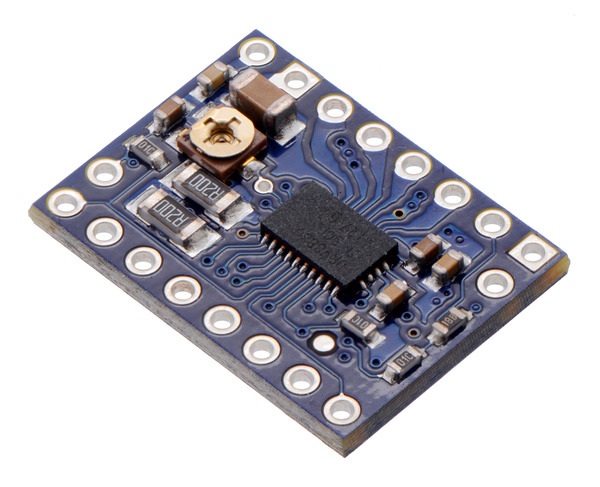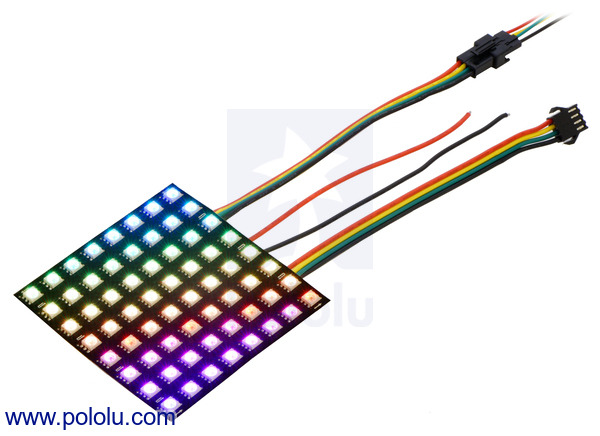Pololu Blog »
Pololu Blog (Page 36)
Welcome to the Pololu Blog, where we provide updates about what we and our customers are doing and thinking about. This blog used to be Pololu president Jan Malášek’s Engage Your Brain blog; you can view just those posts here.
Popular tags: community projects new products raspberry pi arduino more…
New product: Raspberry Pi 3 Model B
We are now offering the Raspberry Pi 3 Model B. The Raspberry Pi is a popular credit card-sized computer that can run ARM Linux distributions. As the successor to the Raspberry Pi 2 Model B, the Pi 3 has a more powerful processor and adds wireless connectivity. Here are the specific improvements:
- 1.2 GHz 64-bit quad-core ARMv8 CPU
- 802.11n Wireless LAN
- Bluetooth 4.1
- Bluetooth Low Energy (BLE)
Along with these improvements, the Raspberry Pi 3 maintains compatibility with and the form factor of the previous Pi 2 (and Pi 1 Model B+). With its 0.1″-spaced GPIO header and small size, the Raspberry Pi also works as a programmable controller in a wide variety of robotics and electronics applications. It can also be combined with our A-Star 32U4 Robot Controller LV with Raspberry Pi Bridge to make a great controller for a small robot. We also carry a selection of Raspberry Pi expansion boards.
|
|
This comparison chart can help in selecting the right Raspberry Pi for your project:
 Raspberry Pi Model A+ 512MB |
 Raspberry Pi Model B+ |
 Raspberry Pi 2 Model B |
 Raspberry Pi 3 Model B |
 Raspberry Pi 3 Model B+ |
|
|---|---|---|---|---|---|
| CPU: | BCM2835 | BCM2836 | BCM2837 | BCM2837B0 | |
| CPU cores: | 1 | 4 | |||
| CPU speed: | 700 MHz | 900 MHz | 1.2 GHz | 1.4 GHz | |
| RAM: | 512 MB | 512 MB | 1 GB | ||
| Ethernet: | No | Yes | |||
| WiFi: | No | 2.4 GHz 802.11n | 2.4 GHz 5 GHz 802.11b/g/n/ac | ||
| Bluetooth: | No | 4.1 | 4.2 | ||
| Bluetooth Low Energy: | No | Yes | |||
| HDMI: | Yes | ||||
| Analog video: | Yes1 | ||||
| SD socket: | microSD | ||||
| Onboard regulators: | switching | ||||
| Expansion header pins: | 40 | ||||
| USB ports: | 1 | 4 | |||
| Mounting holes: | 4 | ||||
| Dimensions2: | 2.5″ × 2.2″ × 0.47″ | 3.35″ × 2.2″ × 0.8″ | |||
| Weight3: | 23 g | 42 g | 50 g | ||
1 Audio and analog video provided by a single four-pole 3.5 mm jack. This 3.5 mm jack also has its own dedicated low-noise power supply for improved audio.
2 Length and width measurements are for the PCB only; several of the connectors extend past the edge of the board.
3 Weight does not include microSD cards.
Tru.D 3D
On Monday, Colin McGinn launched a Kickstarter in order to create a 3D short film using Tru.D 3D, which is a volumetric display system that he designed and patented. The system quickly feeds 3D volumetric objects into a specific viewing area, and each 3D piece forms a frame of an animation to tell a story that can be viewed from any angle.
Included among the Kickstarter rewards is a mini Tru.D 3D machine, which uses our micro metal gearmotors and magnetic encoders to perform a short, two-second animation. The machine is small enough to hold in your hands, and backers have the option of choosing from one of three different animations.
 |
You can find more information on Colin’s project, including the full digital version of the short film, on his Kickstarter.
Sixteen new micro metal gearmotor versions!
We just added 16 new micro metal gearmotors to our already huge selection, including three totally new MP (medium power) gear ratios: 5:1 MP, 210:1 MP, and 250:1 MP. With these new additions, we now have dual-shaft versions available in any combination of our 11 gear ratios and four motor types, giving you 44 different options that work with encoders like our magnetic encoder pair kit.
 |
Magnetic Encoder Kit for Micro Metal Gearmotors assembled on a micro metal gearmotor with extended motor shaft. |
|---|
In all, this increases our total selection of micro metal gearmotors to 85 unique options:
New version of the Wixel Shield for Arduino
We’ve updated our Wixel Shield for Arduino with a few minor improvements. The Wixel Shield provides an easy way to connect a Wixel wireless module to your Arduino or A-Star 32U4 Prime, enabling wireless communication and even wireless programming (on some Arduinos). However, the original version of the shield was released many years ago, so it was not designed with the modern pinout of the Arduino Uno R3 in mind.
The Wixel Shield v1.1 adds pass-throughs for the four new pins—SCL, SDA, IOREF, and an unused pin—introduced by the R3 and present on all newer Arduinos, making it easier to stack other shields with it (especially ones that make use of the new I²C pin location). It also features improved level shifter circuits that make use of the IOREF voltage provided by the Arduino, allowing the shield to work automatically with both 5 V and 3.3 V Arduino boards.
The Wixel Shield for Arduino v1.1 is available by itself and as part of a combination deal that includes a pair of Wixels and a USB cable. See the user’s guide for the shield for additional information.
New product: MP3 Trigger V24
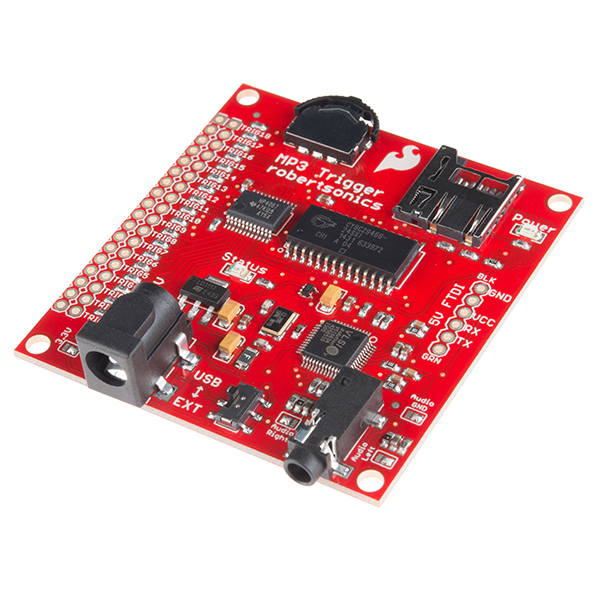 |
The updated MP3 Trigger V24 from SparkFun is now for sale. This new version features improved firmware that can read a configuration file from the SD card, making it much easier to use without a microcontroller. We posted previously about a project using an A-Star 32U4 and an MP3 Trigger to make a Scary shaking tombstone. The MP3 trigger also pairs nicely with the Maestro Servo Controllers because you can use a Maestro servo controller’s scripting capability to trigger sounds to play in sync with motion. You can see examples of how people are using them on our forum here and here.
The Pololu Forum now uses Discourse
We started the Pololu Forum in 2004 as a place for product support and discussion, where Pololu customers can interact directly with each other and Pololu engineers. The forum is our preferred medium for handling technical support since the answers can potentially benefit multiple people and can include the experience of other helpful members of the community.
Recently we changed the forum software from phpBB to Discourse, a more modern and mobile-friendly forum package. We migrated user accounts and posts, so you should still be able to use your same forum username and password to log in. (Your forum account is separate from your Pololu.com account, though.) If you don’t have an account, now is a great time to sign up and join in the robotics and electronics discussion! You can read a lot more about Discourse on its “About” page.
We would be happy to hear how your experience is with Discourse, and if you have any suggestions or feedback on the change, you can post a comment here or in the “About the Pololu Forum” category on the forum.
Here are some technical details about the migration: before migrating, the forum had around 11 thousand user accounts and over 45 thousand posts, so I was very happy to find that following the instructions from the Importing from phpBB3 topic worked well. One thing the importer does not support is handling redirects from the old phpBB URLs. We really wanted to keep all those forum links working, so I modified the import script to generate an Nginx configuration mapping the old URLs to the new ones. I also made an improvement to the Discourse string remapping utility to fix some of the BBCodes that were not rendering well. It has been convenient to contribute to Discourse because they use Ruby on Rails, just like we do for the main Pololu website.
MSOE underwater robotics ROV
The Milwaukee School of Engineering (MSOE) underwater robotics team has been building remotely operated vehicles (ROV) to compete in underwater ROV competitions for several years. In the past, they have created custom motherboards that our 18v15 Simple Motor Controllers could plug directly into:
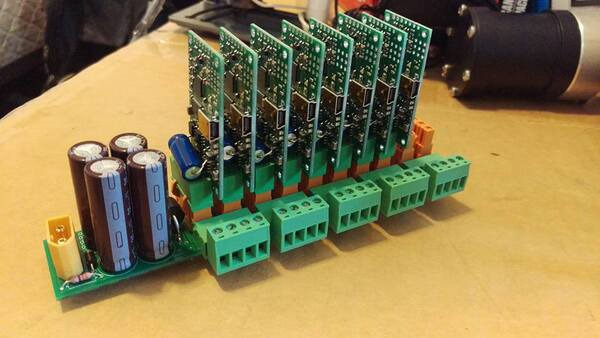 |
Custom Simple Motor Controller motherboard for MSOE underwater ROV. |
|---|
The team is now using our newer G2 High-Power Motor Driver 18v17, which allowed them to save space in the newest iteration of their motherboard.
 |
Custom G2 High-Power Motor Driver motherboard for MSOE underwater ROV. |
|---|
For more information and updates, check out the group’s Facebook page.
New product: DRV8880 Stepper Motor Driver Carrier
I’d like to introduce our latest addition to the Pololu stepper motor driver carrier family, the DRV8880 Stepper Motor Driver Carrier. This carrier for the Texas Instruments DRV8880 driver has the same form factor and basic layout as our A4988 carrier, which makes it a drop-in replacement in many systems. It also has a lot of the same features, like potentiometer adjustable current control and microstepping down to 1/16-step. In addition, the DRV8880 has many new features like inputs for dynamically scaling the current limit to 25%, 50%, 75%, or 100% of the limit set by the potentiometer, nine decay mode combinations, and autotune (insert Daft Punk joke here), which automatically selects the decay mode each PWM cycle for optimal current regulation performance.
The DRV8880 carrier has a maximum current of 1.6 A, and in our tests it could handle about 1 A per phase continuously. It has a 6.5 V to 45 V input voltage range, which is the widest of any of our stepper motor drivers, and it supports both 3.3 V and 5 V logic. For more information about our DRV8880 stepper motor driver carrier, please see its product page.
New products: APA102C-based addressable RGB LED panels
We’re excited to offer a series of APA102C-based addressable RGB LED panels, which make it easy to add colorful images, text, or lighting effects to your project. These panels use the same integrated APA102C LED driver as our APA102C-based addressable RGB LED strips, which means that you can control the LEDs using a standard SPI interface that works over a wide range of communication rates.
We offer APA102C LED panels in three different sizes:
For more information about our APA102C-based LED panels, including links to example code, see their product pages.
 |
Addressable RGB 8×32-LED Flexible Panel, 5V, 10mm Grid (APA102C or SK9822) showing an animated rainbow. |
|---|
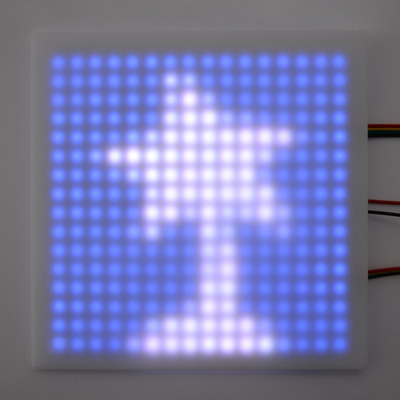 |
An addressable RGB 16×16-LED panel with a plastic diffuser (not included) showing the Pololu logo. |
|---|
Maestro automated observatory
Our customer Robert sent us this spectacular image of NGC 1073 from his backyard observatory after we helped him get a SPDT Relay Carrier working with his Mini-Maestro 18-Channel servo controller. We thought it was pretty cool, so we asked him a bit more about how he captured it and how he is using the Maestro in his observatory. Continued…

